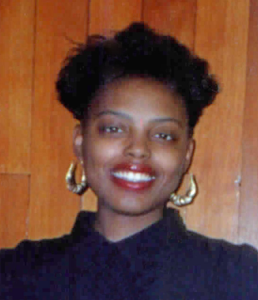The July, 1992 murder of a woman in the South End had gone unsolved, until last week.
James Witkowski, 42, was indicted by a grand jury on Thursday for the brutal first degree murder of Lena Bruce, a 21-year-old Philadelphia native and Tufts graduate who was killed in her South End apartment.
Witkowski snuck into Bruce’s apartment through an open window and used a telephone cord to tie her down while he sexually assaulted and suffocated her in her own home, according to reports of the murder.
Bruce was the only black woman in her class to graduate with a degree in electrical engineering from Tufts University. At the start of summer 1992, she had received her diploma, accepted a job with Stone & Webster global engineering firm, and was living in an apartment on Massachusetts Avenue in the South End.
Bruce’s friends and neighbors told the Boston Herald that the neighborhood was especially dangerous during that time, but she was fearless. Tragically, just two months after moving in, a roommate would come home to find Bruce’s body in their apartment.
“In every way, Lena Bruce was just the kind of person we want in our city,” Suffolk District Attorney Daniel Conley said in a news conference announcing Witkowski’s arrest. “Had she been allowed to grow into a successful woman, there’s no telling what she would have accomplished.”
Witkowski was a stranger to Bruce, CBS Boston reported, and Witkowski had no prior criminal activity that could connect him to the slaying.
Although he left DNA on her body and at the crime scene, it was not until Witkowski violated his probation after an assault and battery charge in 2013 that his fingerprints could be placed at the crime scene.
During summer of 2014, investigators were able to match Witkowski’s DNA with samples cataloged some 16 years ago in the federal database CODIS that had been found underneath the victim’s fingernails and on her body. Investigators also re tested a wallet found in Bruce’s apartment building and found Witkowski’s left thumbprint on a slip of paper.
“Boston Police detectives assigned to the case collected and processed the crime scene evidence carefully. They stored that evidence under laboratory conditions for more than two decades. And as a result, we have today what they couldn’t imagine in 1992 – DNA evidence that identifies James Witkowski to the exclusion of any other suspect, recovered from two locations on Lena Bruce’s body,” Conley said.
WIth the help of advanced technology and diligent police work, Lena Bruce’s killer finally has a face. Bruce’s parents passed away before they could see justice for their daughter, but a Tufts scholarship in Lena Bruce’s name keeps her spirit alive.
Witkowski will appear in Suffolk Superior Court later this fall.







